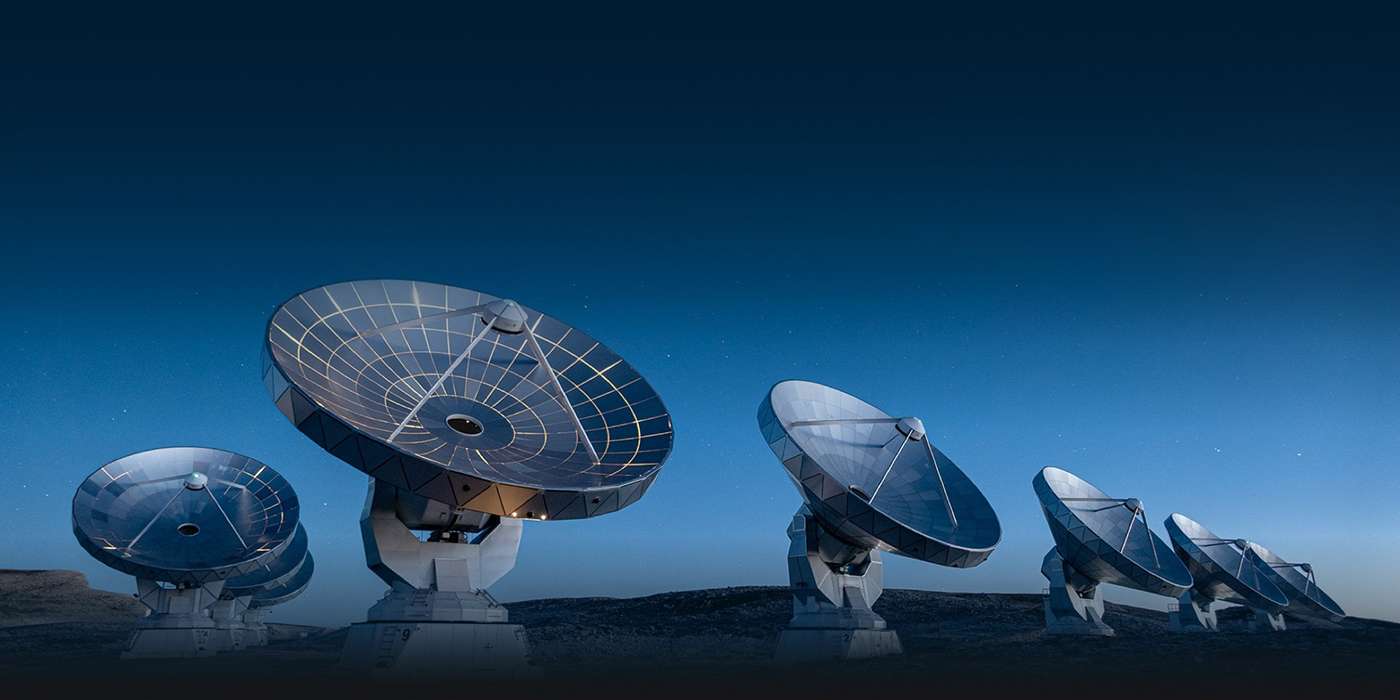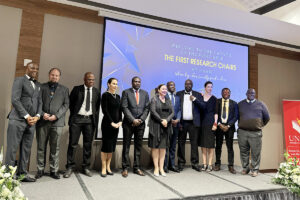Netherlands Research School for Astronomy (NOVA) & UNAM Astrophysics Research
Nijmegen, The Netherlands and Windhoek, Namibia – The Dutch Research Council (NWO) has awarded a grant of 3.45 million euros (N$69.7 million) to a Dutch team, together with British, Finish, and Namibian astronomers, that will enable the first colour movies of black holes. The astronomers will build the first millimetre-wave radio telescope in Namibia. It will be part of the worldwide Event Horizon Telescope network that took the first picture of a black hole.
The telescope will help gain a better understanding of the full range of black holes in the Universe, big and small.
Africa Millimetre Telescope
With the new NWO grant, the Africa Millimetre Telescope (AMT) project is fully funded for construction in Namibia. This telescope will be built on or close to the Gamsberg in the Khomas Highlands and is designed to be able to connect to the Event Horizon Telescope (EHT) network.

The EHT collaboration published the first images of two supermassive black holes in 2019 and 2022. The AMT, situated in the southern hemisphere, will have an excellent view of the black hole in the centre of our Milky Way and form a crucial link between telescopes in Europe, South and Latin America, and at the South Pole.
The grant has been awarded to a national consortium of the four NOVA astronomy institutes in the Netherlands, in collaboration with NWO institute ASTRON, the Netherlands Institute for Radio Astronomy, and the Joint Institute for VLBI ERIC (JIVE).
The University of Namibia (UNAM), Oxford University, and the University of Turku are international partners in the proposal.
Pioneering role
Principal researcher, Heino Falcke, at Radboud University, said: “This telescope will be the first of its kind in Africa, and will allow us to peer deep into the heart of our own Milky Way. The national funding allows the entire Dutch astronomy community to play a pioneering role in bringing the global Event Horizon Telescope to the next level and help us understand the dynamic and violent processes around black holes.”
Co-investigator Sera Markoff at the University of Amsterdam said: “For the first time we will be able to monitor both the black hole horizon and the enormous plasma jets they eject, allowing us to better understand their launch conditions. We will also be able to extend our studies both in ‘colour’ as well as black hole mass, via flaring black holes that flash on and off in the sky.”
“It is with great pleasure that we see our colleagues in The Netherlands receiving also national support for the realisation of our common plan to build the Africa Millimetre Telescope here in Namibia. We wholeheartedly congratulate them and are looking forward to continued and increased bi- and multi-lateral collaboration on the construction as well as science exploration of the AMT,” says Prof Michael Backes, Head of Astrophysics Research at UNAM.
# #
For further information, please contact the following:
UNAM Press Office
- Mr Simon Namesho; Email: snamesho@unam.na | Tel: +264 61 206 3091
NOVA Press Office
- Ms Marieke Baan; Email: h.m.baan@uva.nl | Tel: +31 61 432 2627
Images
- The Gamsberg in Namibia. Credit: Barbara Kerkhof
- The NOEMA telescopes, a single of which forms the blueprint for the AMT. Credit: IRAM / F.X. Cuvelier
# # #
About NOVA – https://www.astronomie.nl/
The Netherlands Research School for Astronomy (NOVA) is a collaborative partnership between the astronomy institutes of the universities of Amsterdam, Groningen, Leiden and Nijmegen. The mission of leading research school NOVA is to carry out ground-breaking astronomy research, train young astronomers at the highest international level and share new discoveries with society. The NOVA laboratories are specialised in building state-of-the-art optic/infra-red and sub-millimetre instruments for the largest telescopes on Earth.
About the University of Namibia – https://www.unam.edu.na/
The University of Namibia (UNAM) is a leading tertiary education institution in Namibia, established in 1992. With 12 campuses, it is known for its academic excellence, research and community development projects. UNAM has a diverse student body from 40 countries, with over 25,000 students (2023). Offering undergraduate and postgraduate programmes in various disciplines, UNAM is recognized as a top contributor to new knowledge in Namibia. It ranks among the top 16 universities in Africa, and its alumni have achieved success globally, holding prominent positions in government, the private sector and worldwide. UNAM’s Department of Physics, Chemistry and Material Science has been involved in world-class astronomical research for the past 20 years with the H.E.S.S. gamma-ray telescopes in Namibia, the Southern African Large Telescope (SALT) in South Africa, and is one of the driving institutes for the AMT.





